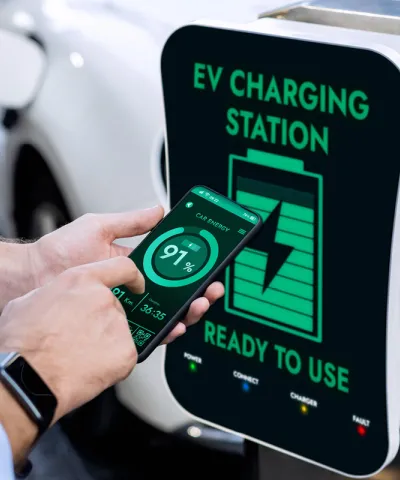Dynamic pricing: Real-time solutions for your business
Dynamic pricing isn't just about adjusting prices — it's about seizing opportunities to maximize revenue and profit in real-time.
We guide you through this powerful strategy, so you can make informed decisions that drive tangible results.
While dynamic pricing isn't new, its presence has surged in recent years. The emergence of e-commerce platforms and sophisticated pricing optimization software has propelled its adoption. It's a strategy grounded in known economic principles such as supply and demand dynamics, price elasticity, and market equilibrium. Today, companies can enhance these traditional concepts using modern tools and techniques.
Explore the world of dynamic pricing, uncovering strategies and insights to unlock its full potential.
What is dynamic pricing and how to use it?
Dynamic pricing involves adjusting prices in real-time based on market conditions, customer behavior, and the competitive landscape. Here you must understand customer segments and their willingness to pay and establish tailored pricing strategies.
Many companies use big data and advanced analytics for real-time pricing decisions. Some use dynamic pricing software that can automate pricing adjustments based on market conditions and customer interactions. Others develop sophisticated machine learning algorithms that predict customer demand and optimize prices.
However you apply dynamic pricing, it requires an understanding of how customers perceive value and react to price changes. The pricing architecture should also align with your company's value proposition and strategic goals.
One of the primary advantages of dynamic pricing is its ability to optimize revenue and profit. By analyzing real-time data you can set prices that reflect your offering's current market value. This can lead to increased profitability, especially during peak demand periods when customers have a higher willingness to pay.
Not only can dynamic pricing tap into higher willingness to pay, it can also help you manage inventory. This strategy motivates customers to purchase products or services during off-peak times. It reduces the risk of overstocking or understocking and minimizes inventory holding costs.
With a dynamic pricing strategy, you can gain a competitive advantage by responding quickly to changes in market conditions. You may even be able to outmaneuver your competitors. This agility allows you to stay ahead in fast-paced industries and attract more customers.
Dynamic pricing can also lead to a more personalized shopping experience. Tailoring prices to customer preferences, purchasing behavior, and perceived value can enhance customer satisfaction and loyalty.
Finally, dynamic pricing can lead to significant improvement in your overall pricing strategy. By leveraging data analytics and algorithms, you can gain valuable insights into customer behavior, market trends, and competitor pricing. This enables you to refine your pricing strategies over time and make more informed decisions that drive long-term success.
Dynamic pricing isn't without its challenges and criticisms. While it can benefit businesses by increasing revenue and maximizing profits, customers may not always perceive price fluctuations favorably.
One concern is fairness and transparency. Dynamic pricing can be complex, especially when using sophisticated algorithms to determine prices. This can make it difficult for customers to understand why prices change. If prices seem arbitrary or unfairly inflated, negative backlash can damage your company's reputation.
Another challenge is the potential for price discrimination. Dynamic pricing allows you to charge different prices to different customers based on their willingness to pay. While this can be profitable, it may also lead to accusations of unfair treatment.
Dynamic pricing algorithms may inadvertently perpetuate or exacerbate the problem. For example, algorithms that rely on historical data may reflect and reinforce existing biases in pricing decisions. There are also regulatory considerations to take into account, particularly regarding pricing practices deemed anti-competitive or exploitative. Companies need to navigate these legal and ethical boundaries carefully to avoid potential legal consequences or public backlash.
Overall, while dynamic pricing offers benefits, you must carefully consider and address the potential pitfalls and challenges. It's important to ensure that pricing strategies are fair, transparent, and aligned with customer expectations.
Many mistakenly believe that dynamic pricing is exclusively for B2C companies. In reality, dynamic pricing is a versatile pricing strategy that companies of all types and sizes can apply.
In both B2C and B2B contexts, implementation varies by the industry, target market, and business model. However, the underlying principles of leveraging data, analytics, and real-time pricing adjustments remain the same.
There is also a misconception that B2B transactions are more complex and less amenable to real-time price adjustments. However, with advancements in technology and data analytics, B2B firms can also use dynamic tools and algorithms in pricing.
Determining whether dynamic pricing is right for your business can be complex. Our experts at Simon-Kucher are here to help. Reach out to us for a personalized consultation and discover how dynamic pricing can benefit your specific needs and goals.
Airline tickets
Airlines often adjust ticket prices based on factors such as demand, time until departure, seat availability, and market environment. Prices for flights fluctuate depending on the booking date. During peak travel times where demand is high, prices are typically higher, too.
Ride-sharing services
Companies like Uber and Lyft use surge pricing to adjust ride fares in real-time based on demand and supply. Prices increase during times of high demand, such as rush hours or during bad weather. This encourages more drivers to be on the road and to balance supply with demand.
Hotel rooms
Hotels often adjust room rates based on factors such as demand, season, events in the area, and occupancy rates. There may be higher prices during peak travel seasons or when there are major events happening nearby.
E-commerce
Online retailers frequently use dynamic pricing to adjust prices to reflect competitor pricing, customer browsing, purchasing history, and inventory. Prices for products on e-commerce platforms can change multiple times throughout the day in response to market conditions.
Event tickets
Ticket sellers for concerts, sporting events, and other live performances often use dynamic pricing to adjust ticket prices. They may raise prices as the event date approaches or if demand exceeds available inventory.
Manufacturing and wholesale
B2B companies may use dynamic pricing to offer flexible pricing arrangements for bulk orders, negotiated contracts, or customized products. Companies can adjust prices based on factors like order volume, production costs, and market conditions.
Technology and software
B2B software providers often employ dynamic pricing models for subscription-based services, enterprise licensing agreements, or usage-based billing. Prices can vary based on factors like the number of users, feature sets, or usage metrics.
Professional services
B2B service providers may use dynamic pricing to reflect factors like project scope, complexity, and requirements.
Customers' perceptions of dynamic pricing can vary based on several factors, including their individual preferences, experiences, and understanding of the pricing strategy. Understanding customer perception before implementing dynamic pricing is essential.
Some customers might see it as price gouging or taking advantage of their need for a product or service at a particular time. Others appreciate the convenience of dynamic pricing, especially if it offers flexibility and better access to products or services.
Your customers may appreciate personalized pricing based on their individual preferences and behaviors. For example, they might receive discounts or promotions tailored to their purchasing history or loyalty status. There are also groups of customers who are uncomfortable with companies collecting and using personal data to determine prices. They may favor fixed pricing instead.
When implementing dynamic pricing strategies, it's important to understand these factors. Strive to strike a balance that maximizes revenue while maintaining positive customer relationships. Effective communication and transparency are key to managing customers' perceptions of dynamic pricing and mitigating any potential negative reactions.
Navigating these challenges can be complex, but you don't have to do it alone. Our experts at Simon-Kucher can help you develop a dynamic pricing strategy that addresses these concerns and fits your business needs. Contact us today to learn more about how we can support you in this journey.
How we've helped
Grow your revenues with Simon-Kucher
Get in touch
With 40 years of experience, we help you prioritize and implement the right commercial growth strategies to outperform market trends. We take a 360 degree approach to understand the behavior and needs of the market, combining our expertise and agile mindset with our client’s knowledge to unlock your sustainable, profitable growth potential and do so at pace.







